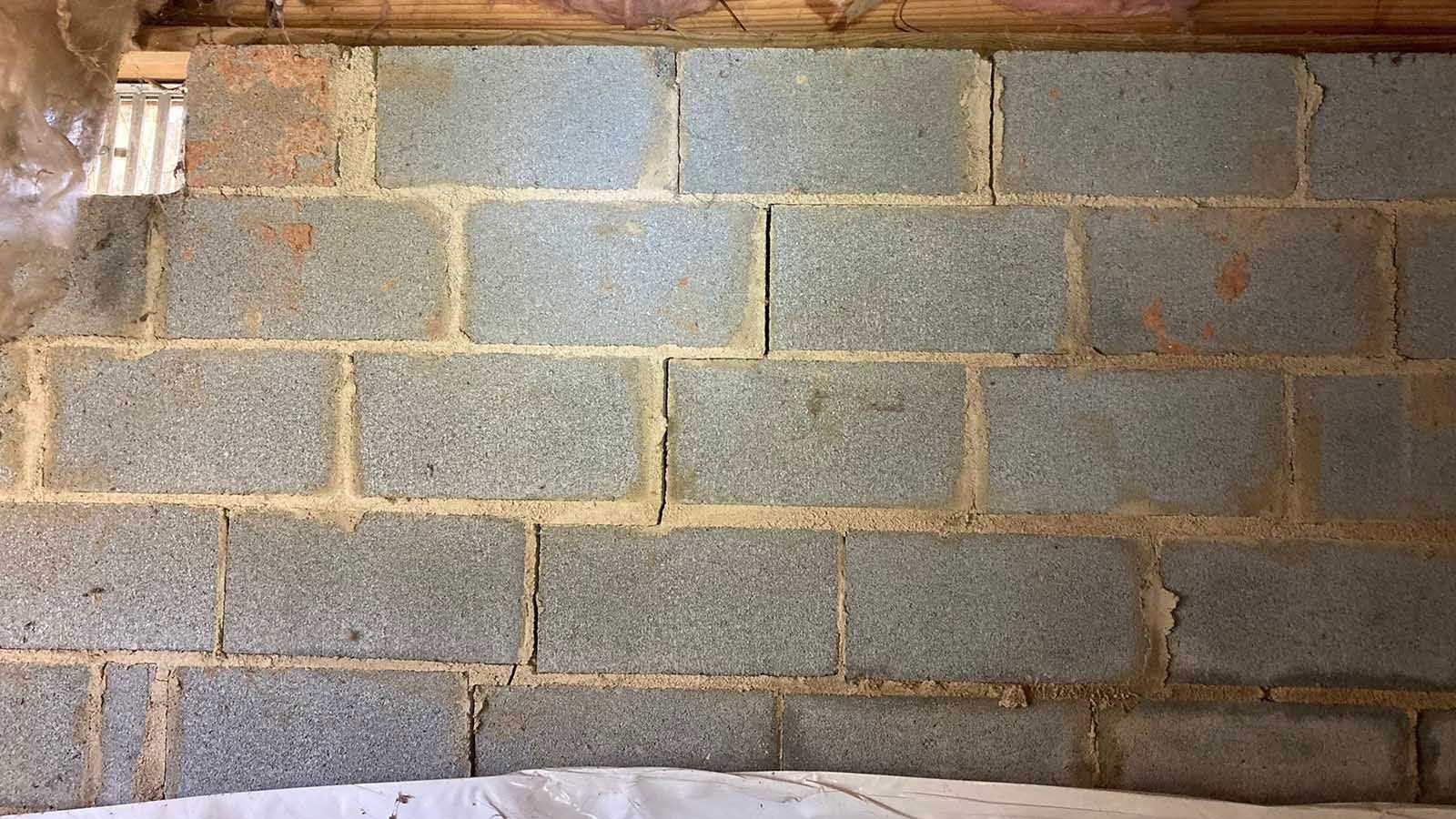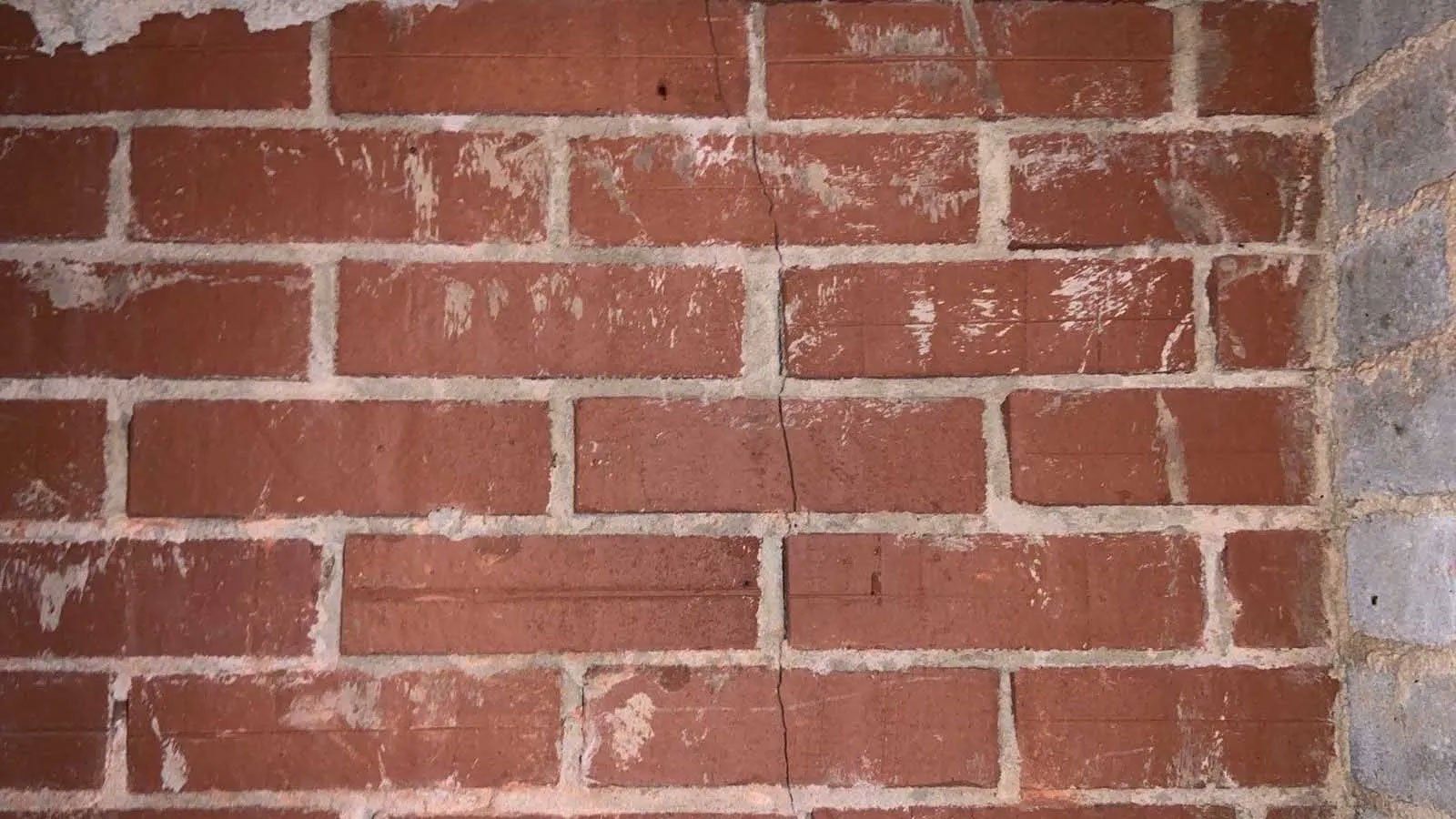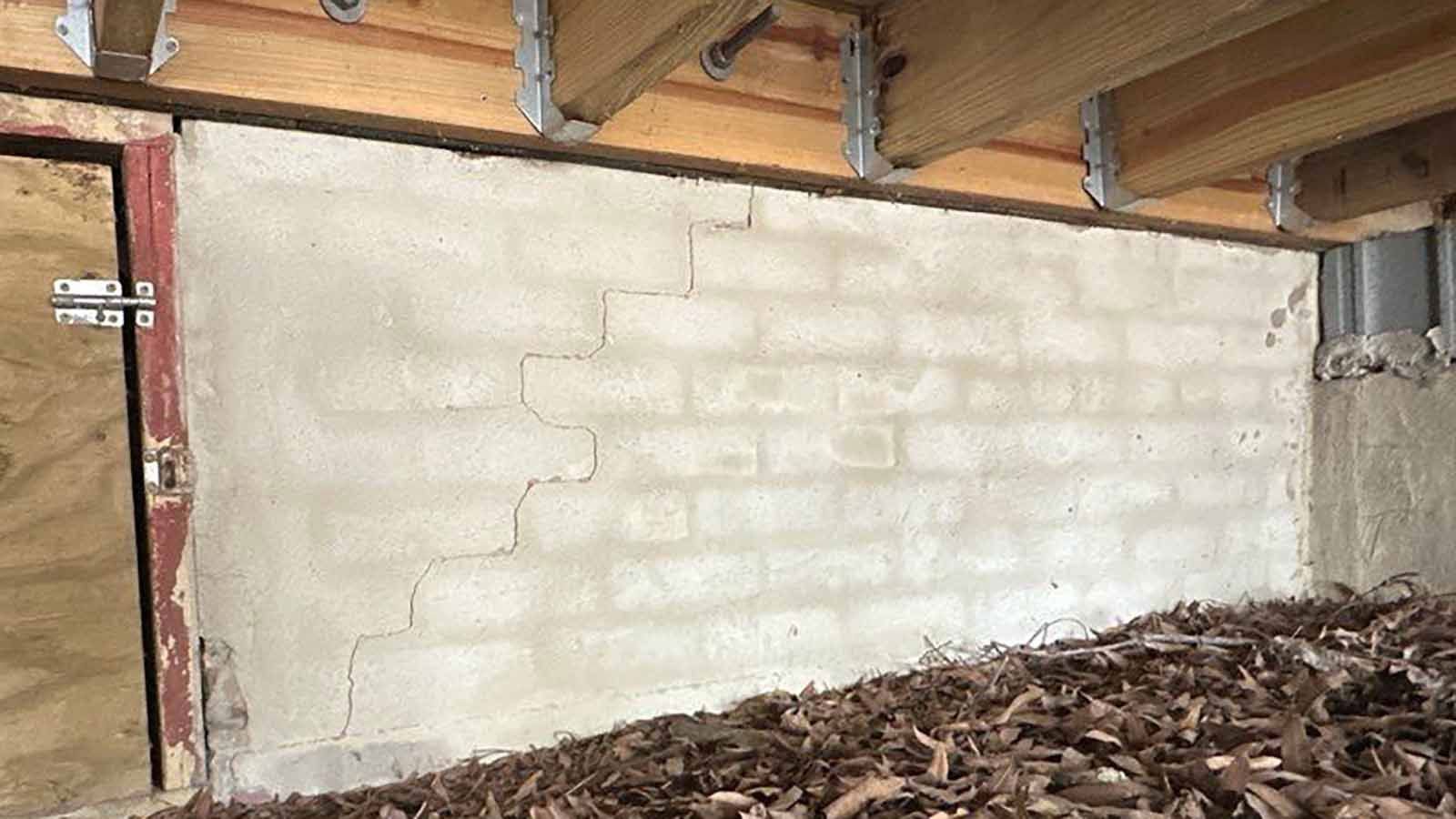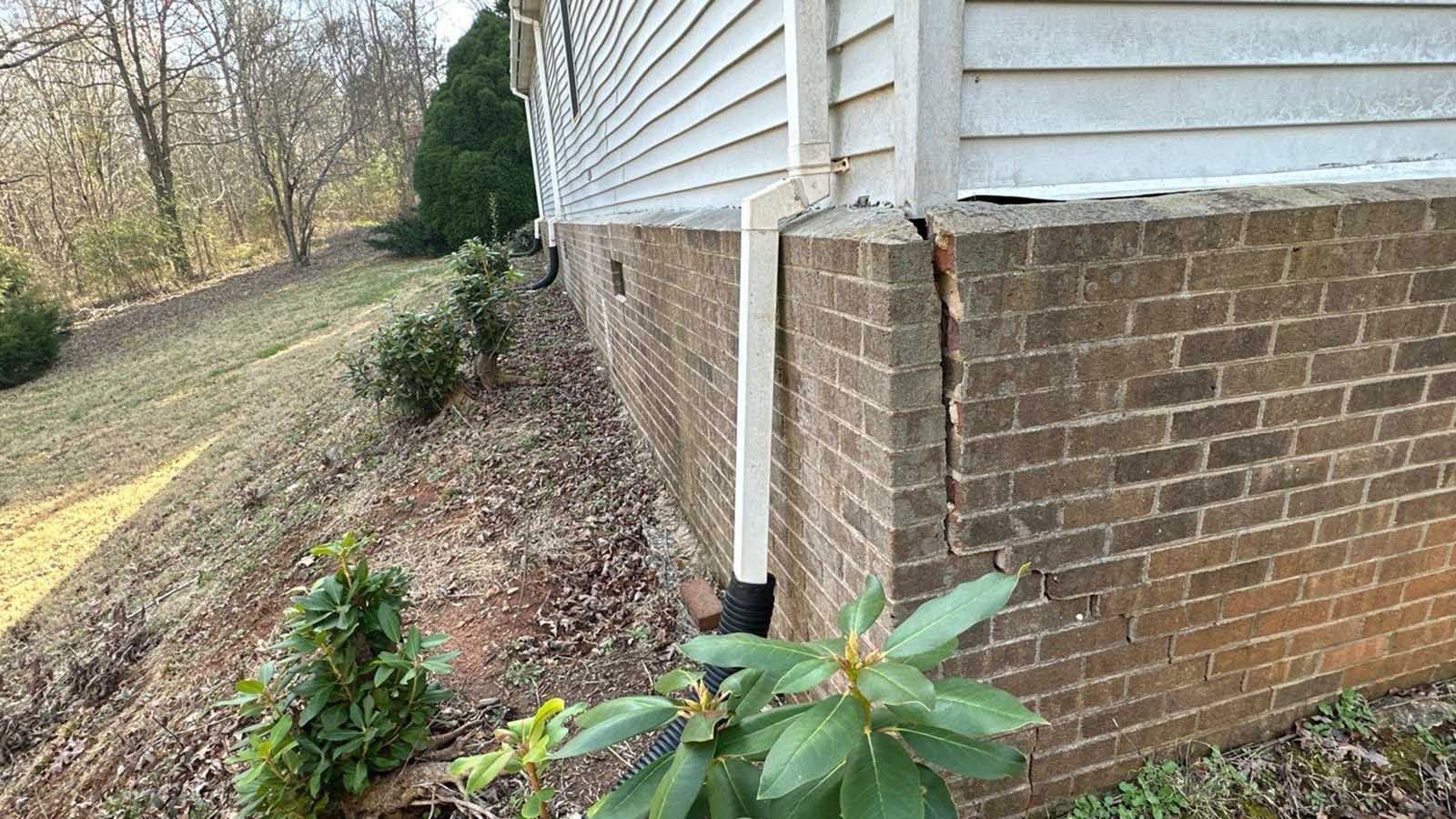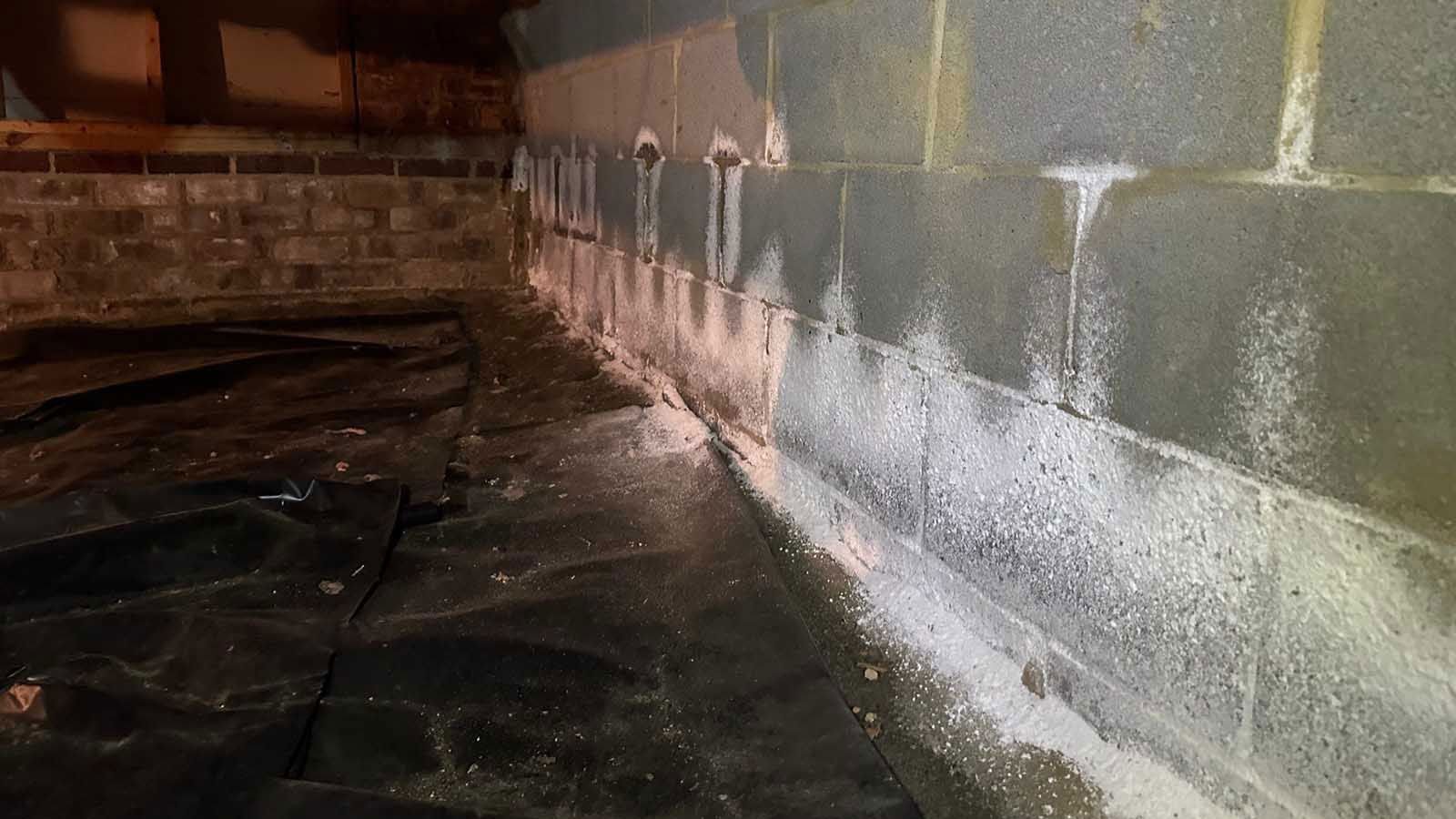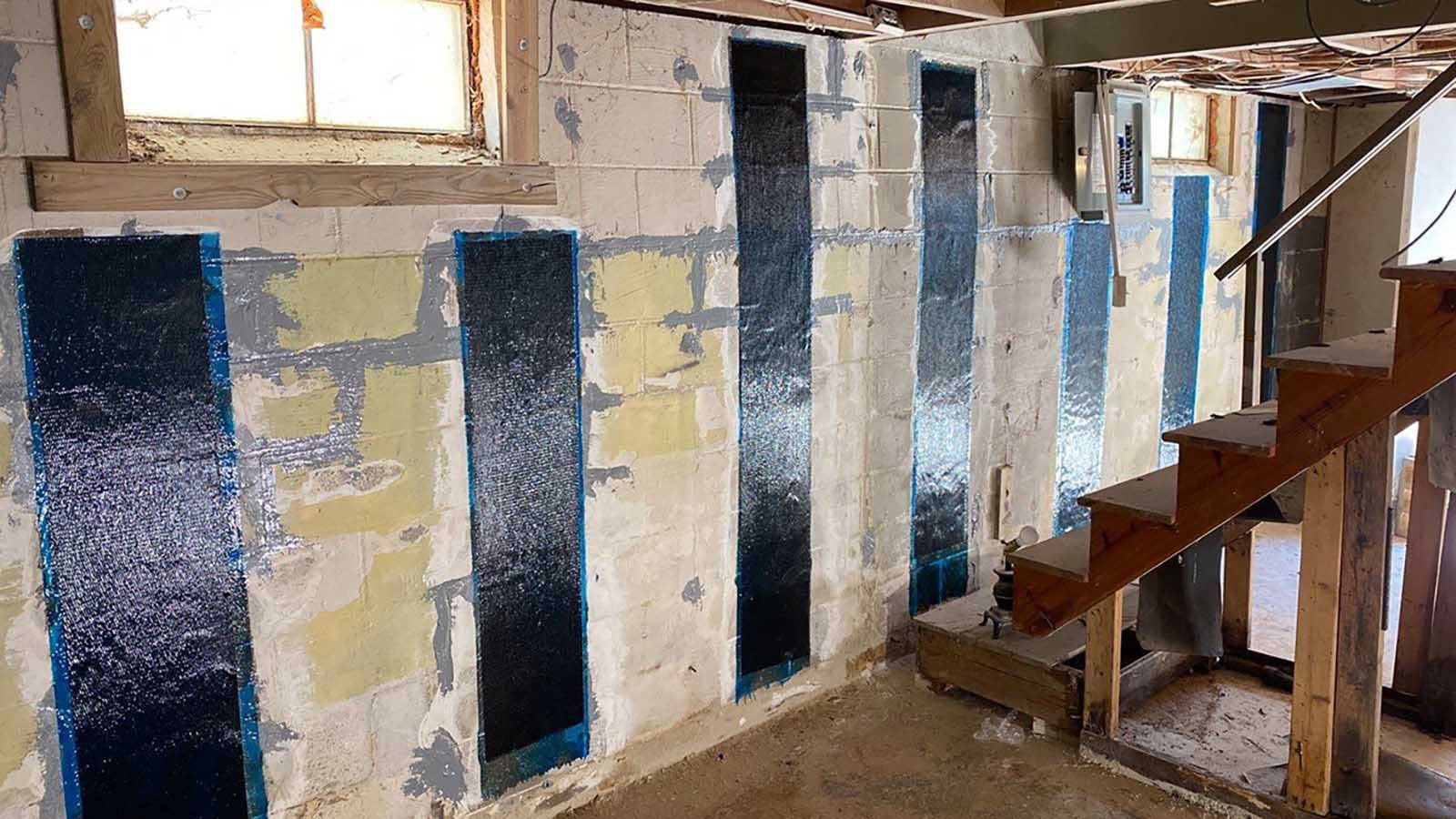Though home foundations can be made of many materials, the most common, at least in the Charlotte, North Carolina area, is some type of masonry. Concrete blocks, brick, or poured concrete are the typical materials used to construct a home’s foundation. For this article, we will be concentrating on basement or crawl space foundations.
Cracks in block foundations can be as simple as aesthetic blemishes, or as serious as catastrophic structural failure. If you have noticed foundation cracks, be aware that not all foundation wall cracks are the same. Analyzing the crack can tell you a lot about the damage, if any, to your foundation, including what caused it and how severe the problem is.
HAIRLINE CRACKS
While they may be unsightly, generally hairline cracks in masonry are not an immediate cause for alarm. These cracks can be caused by the natural expansion and contraction of the concrete or bricks due to temperature extremes. Here in the Charlotte area, our temperatures can swing widely between cold and hot, with some days seeing temperature variations of more than 40 degrees in one day. That freeze/thaw effect can cause small cracks to form in the masonry. While not a major problem in and of itself, if the hairline cracks become wider or deeper, they may allow water to enter, causing further damage to the masonry or creating a bigger problem if the water enters your basement or crawlspace.
VERTICAL CRACKS
Cracks that run up and down a foundation wall are referred to as vertical cracks. They are among the most common basement cracks in our area. Vertical cracks will differ depending on the material of your foundation. Small, thin vertical brick cracks can appear shortly after a house is built and can be attributed to house settling. On the other hand, wide vertical brick cracks are a warning sign of more significant foundation problems.
HORIZONTAL CRACKS
Horizontal cracks in the foundation of your basement are a sign of structural damage. This type of crack is frequently caused by unstable soil and hydrostatic water pushing against your home’s basement walls. You may notice that the foundation is bowing inwards and that water is leaking into your basement. Horizontal cracks can appear in both block foundations and poured foundations.
STAIR-STEP CRACKS
Commonly found in block foundation walls, stair-step cracks occur along mortar joints and pose a significant threat to the structural integrity of your basement foundation. These stair-step pattern cracks generally occur when one area of the foundation is sinking or settling or when there are moisture issues outside of your foundation.
DIAGONAL CRACKS
Most diagonal foundation cracks, like vertical cracks, do not pose a severe threat to the structural integrity of your foundation. They can be found running up to 30 degrees steep and are caused by the natural healing of the concrete foundation wall or settlement over time. If you encounter a diagonal crack, take a photo and record the date. You should not be concerned if the crack is a hairline and a quarter cannot fit. Check back in 6 months, and if the crack has grown larger, then it may be time to consult a foundation expert.
CORNER CRACKS
Cracks that appear at the corners of the foundation walls can be a sign of foundation settlement or soil movement, or they may be caused by poor construction or insufficient reinforcement at the corners. In any case, corner cracks are a cause for concern and should be addressed right away.
Causes of Masonry Cracks
The very nature of masonry, because it is a rigid substance, makes it prone to cracking. Because water is used as an ingredient in its production, it is subject to contraction and expansion with temperature extremes. But while some minor foundation cracks are to be expected, the cracks discussed above are caused by more serious issues.
HYDROSTATIC PRESSURE
The soil around your home rests up against your foundation walls. Over time, the soil can become saturated, causing it to expand and exert outward pressure, which ends up pushing against the foundation walls. Since concrete and brick are porous, this water will eventually seep into and even through walls, essentially weakening the walls. You will typically notice damp concrete or blocks, and possibly efflorescence.
Eventually, you will notice cracks in the wall, most likely horizontal, as the soil pressure from outside the wall pushing in becomes too much for the masonry to withstand. If left unattended, the horizontal crack will become wider, and the wall will start to bow inward. Without intervention, the wall will continue to deteriorate and eventually collapse.
DROUGHT
Just as too much water in the soil can cause problems, the opposite is also true. Periods of drought can leach all the water from the soil, causing it to compact and pull away from your foundation. This can allow your foundation walls to shift or sink, creating tell-tale cracks in your masonry.
WATER INTRUSION
The introduction of water into a basement or underground crawlspace can be caused by external factors such as heavy rains, clogged gutters or downspouts, or improper grading around the foundation, or it can be caused by plumbing leaks from inside the home. No matter the cause, finding the source of the water and a solution for fixing the problem so that it doesn’t reoccur is critical to the health of your home.
Repairing Foundation Cracks
For minor hairline cracks or small vertical cracks that are not getting larger, a simple fix is to fill the cracks with epoxy. This strong, durable material is injected or troweled into the cracks and once hardened, can be sanded smooth. Provided that the cracks are mostly aesthetic in nature and not a sign of a larger problem, epoxy injections are a quick, economical solution to repairing foundation cracks.
CARBON FIBER
Walls that have large horizontal cracks are in major need of repair. The walls are often bowed inward at the cracks, as they succumb to hydrostatic pressure or poor building techniques. One of the most effective solutions for reinforcing bowed walls is the use of carbon fiber straps. Carbon fiber strapping is a material that combines carbon fibers with a polymer resin, resulting in an extremely strong and durable material. The straps are adhered to the wall with epoxy, helping to reinforce and stabilize the masonry. Read more about carbon fiber and how it is used to stabilize bowing walls.
Though carbon fiber is highly effective at stabilizing walls that are slightly bowing and preventing further movement, it is not used to straighten walls. For those walls that have more pronounced bowing, more than 2 inches, other foundation repair methods will be needed to straighten them.
WALL ANCHORS
Severely bowing walls may call for wall anchors to stabilize them. Steel wall anchors are installed in the soil outside the damaged wall and on the inside of the wall. A heavy-duty steel rod is drilled through the wall and attached at either end to these anchors. The anchors are then tightened toward each other, straightening and stabilizing the wall. This method is very effective for repairing damaged walls, but in some cases the wall may be too crumbly or damaged to withstand the procedure. Also, at least 10 feet of soil is needed on the outside of the wall to install the anchor, so homes with very narrow lot lines or utilities or structures along the wall in question are unsuitable for this repair method.
HELICAL TIEBACKS
Much like wall anchors, helical tiebacks can be an option for more severely bowed walls in need of stabilization. The soil around the home, in most instances, does not need to be excavated for the tiebacks to be placed because the corkscrew rods are drilled through the wall from inside into the soil at an angle. Once the screws reach the correct torque, the rods will pull the wall back into place.
Preventing Masonry Wall Damage
The main culprit behind masonry cracks and damage is water. More specifically, too much water in places it should not be. Hydrostatic pressure from saturated soil around your foundation or basement walls can create tremendous pressure and cause your walls to bow inward. While repairing your basement walls with the above repair methods is key, so is determining what caused the damage in the first place and taking steps to prevent reoccurring foundation issues.
Quickly inspecting your home’s gutters and downspouts is the first step in determining if too much water ends up near your foundation or basement walls. If gutters are clogged, they can not channel water to your downspouts, instead allowing it to spill over into the soil close to your home. In addition, your downspouts should have extensions that carry rainwater at least 6 feet away from your foundation.
Proper grading around your home is essential for carrying water away from your foundation. If you have the best gutter system and great downspout extensions, but your yard slopes toward your house and not away from it, you are going to have water up against your foundation walls. Though re-grading a yard with established landscaping is an intrusive undertaking, it is worth it to prevent damage to your basement or foundation walls in the long run.
Schedule A Free Consultation
Even with proper grading and home maintenance, you may need a drainage and waterproofing system to prevent damage and other foundation issues. HydroHelp911 is experienced in all methods of waterproofing. Our foundation experts can help you decide which option is best for you. Contact us today for a free inspection or give us a call at 704-741-9737 if you have any questions.

